Henry Goddard (architect) on:
[Wikipedia]
[Google]
[Amazon]
Henry Goddard (1813 – 1899) was an English architect who was a member of a family of architects who worked in Leicester. He moved to Lincoln and was later in partnership with his son Francis Henry Goddard.

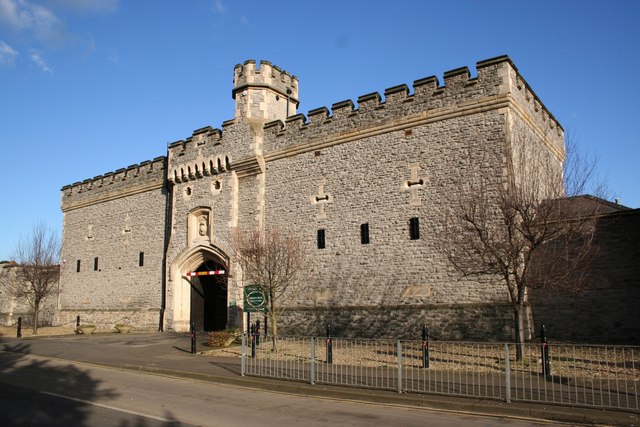




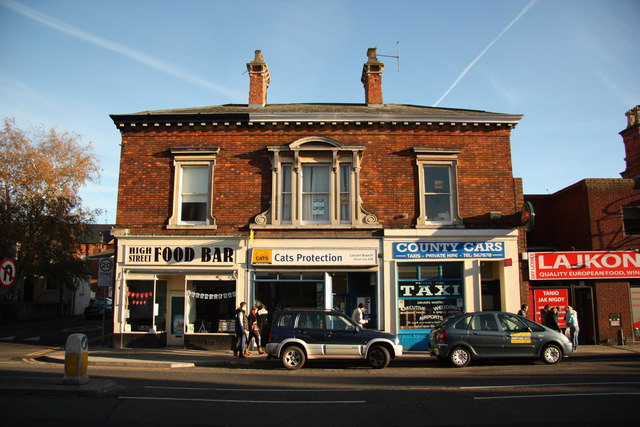 The Lincolnshire Constabulary was formed in 1856 under the
The Lincolnshire Constabulary was formed in 1856 under the

 *Great Northern Hotel, Peterborough.
* Great Northern Hotel and Great Northern Vaults, 177 High Street (west side), Lincoln 1847 but formerly ‘’ The Black Boy’’. By Henry Goddard. Behind, facing the railway was a 13 bay range Pevsner claimed that it was possibly incorporating parts of an earlier building, but record photographs of the demolition show this was not the case. Demolished c.1959.
*Great Northern Vaults, High Street, Lincoln. On the opposite side of the street to the Great Northern Hotel, also by Goddard. This was presumably a wine and spirits storage deport with an Italianate tower with a large entrance arch and two wings facing onto the High Street, just too the south of the existing railway crossing. All demolished apart from a portion of the southern wing which still fronts onto the High Street
*Great Northern Hotel, Peterborough.
* Great Northern Hotel and Great Northern Vaults, 177 High Street (west side), Lincoln 1847 but formerly ‘’ The Black Boy’’. By Henry Goddard. Behind, facing the railway was a 13 bay range Pevsner claimed that it was possibly incorporating parts of an earlier building, but record photographs of the demolition show this was not the case. Demolished c.1959.
*Great Northern Vaults, High Street, Lincoln. On the opposite side of the street to the Great Northern Hotel, also by Goddard. This was presumably a wine and spirits storage deport with an Italianate tower with a large entrance arch and two wings facing onto the High Street, just too the south of the existing railway crossing. All demolished apart from a portion of the southern wing which still fronts onto the High Street
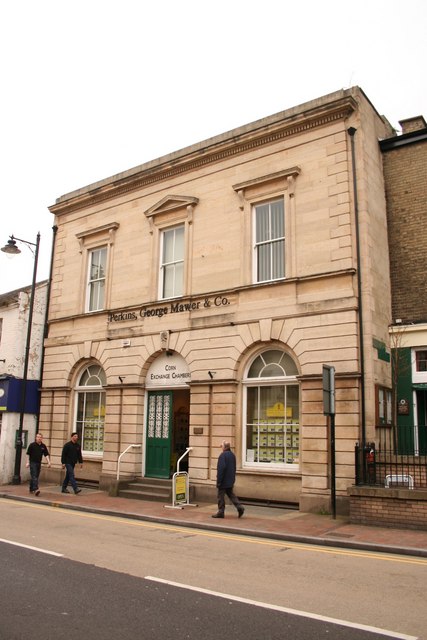 *
*
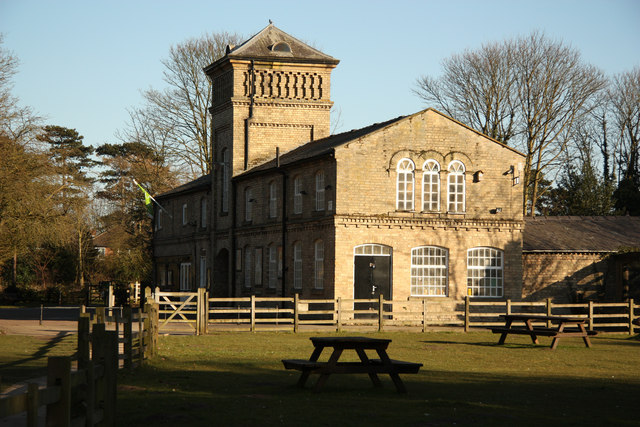 *Lincoln Hartshome Hall, was built in 1862 for the industrialist Joseph Shuttleworth. The grounds were laid out by the landscape architect Edward Milner and included a lake, imported and native trees and shrubs, yew trees forming the Ladies’ Walk, a yew circle, a small crescent-shaped pond and a ha-ha. Surviving buildings and structures include the boathouse (built in 1881 and bearing the Shuttleworth Crescent), stables, a lodge along the track leading to Doddington Road, balustrades and steps, and a number of monuments including the obelisk on the north side of the lake. Hartsholme Hall itself was demolished in 1951 after being purchased by Lincoln City.
*Monks' Manor, Lincoln. Goddard would appear to have designed this house for
*Lincoln Hartshome Hall, was built in 1862 for the industrialist Joseph Shuttleworth. The grounds were laid out by the landscape architect Edward Milner and included a lake, imported and native trees and shrubs, yew trees forming the Ladies’ Walk, a yew circle, a small crescent-shaped pond and a ha-ha. Surviving buildings and structures include the boathouse (built in 1881 and bearing the Shuttleworth Crescent), stables, a lodge along the track leading to Doddington Road, balustrades and steps, and a number of monuments including the obelisk on the north side of the lake. Hartsholme Hall itself was demolished in 1951 after being purchased by Lincoln City.
*Monks' Manor, Lincoln. Goddard would appear to have designed this house for
 *National School, Bassingham, Lincolnshire. Later Board School and now primary school.(1855) The Lincolnshire Chronicle reports:''The National schools here have just been completed from the design, and under the direction of Mr. H. Goddard, architect, of Lincoln. The buildings are conveniently situated opposite to the church, and their plan resemble the letter H, one wing forming the boys' school, and the other the master's residence, with the girls' school in the centre, the offices being detached and in the rear. The walls are of red brick-work, with arched and splayed openings for the window frames, and the gables of the roof, which are of a high pitch and covered with slate, are ornamented with carved verge boards, that of the boys' school having also stone ribbon, bearing the name and date of erection.'' The cost of construction was about £650.
*National School, Bassingham, Lincolnshire. Later Board School and now primary school.(1855) The Lincolnshire Chronicle reports:''The National schools here have just been completed from the design, and under the direction of Mr. H. Goddard, architect, of Lincoln. The buildings are conveniently situated opposite to the church, and their plan resemble the letter H, one wing forming the boys' school, and the other the master's residence, with the girls' school in the centre, the offices being detached and in the rear. The walls are of red brick-work, with arched and splayed openings for the window frames, and the gables of the roof, which are of a high pitch and covered with slate, are ornamented with carved verge boards, that of the boys' school having also stone ribbon, bearing the name and date of erection.'' The cost of construction was about £650.
 The rapid growth of Lincoln in the mid to late 19th century provided considerable opportunities for undertaking architectural work for wealthy factory owners who were involved in the engineering and metalworking industries. This work involved the design and layout of factories, the provision of housing, the laying out of new streets and the construction of the villas and residences of the factory owners. The Goddards seem to have developed a close relationship with
The rapid growth of Lincoln in the mid to late 19th century provided considerable opportunities for undertaking architectural work for wealthy factory owners who were involved in the engineering and metalworking industries. This work involved the design and layout of factories, the provision of housing, the laying out of new streets and the construction of the villas and residences of the factory owners. The Goddards seem to have developed a close relationship with

 * Lincoln, The Drill Hall, Broadgate. 1890. The architect was ''Major F. H. Goddard'' of Goddard and Co. It was built at the cost of £10,000 which was funded by
* Lincoln, The Drill Hall, Broadgate. 1890. The architect was ''Major F. H. Goddard'' of Goddard and Co. It was built at the cost of £10,000 which was funded by
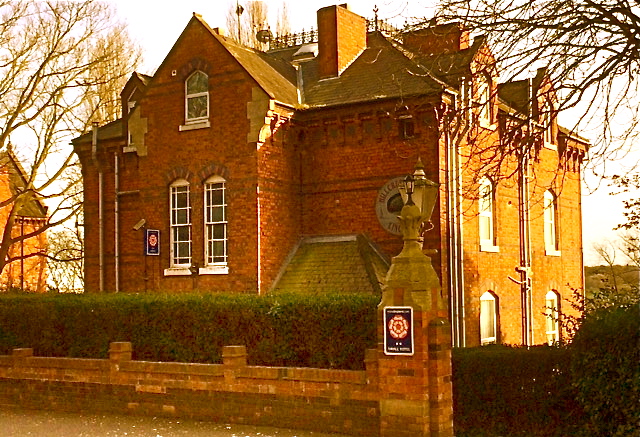 * St Swithins Parsonage 15 Lindum Terrace, Lincoln. 1871. Red brick with black banding running round the building at second storey level and contrasting red and black bricks used for window
* St Swithins Parsonage 15 Lindum Terrace, Lincoln. 1871. Red brick with black banding running round the building at second storey level and contrasting red and black bricks used for window  *Bourne Vicarage. By F.H Goddard, 1878.
*
*Bourne Vicarage. By F.H Goddard, 1878.
*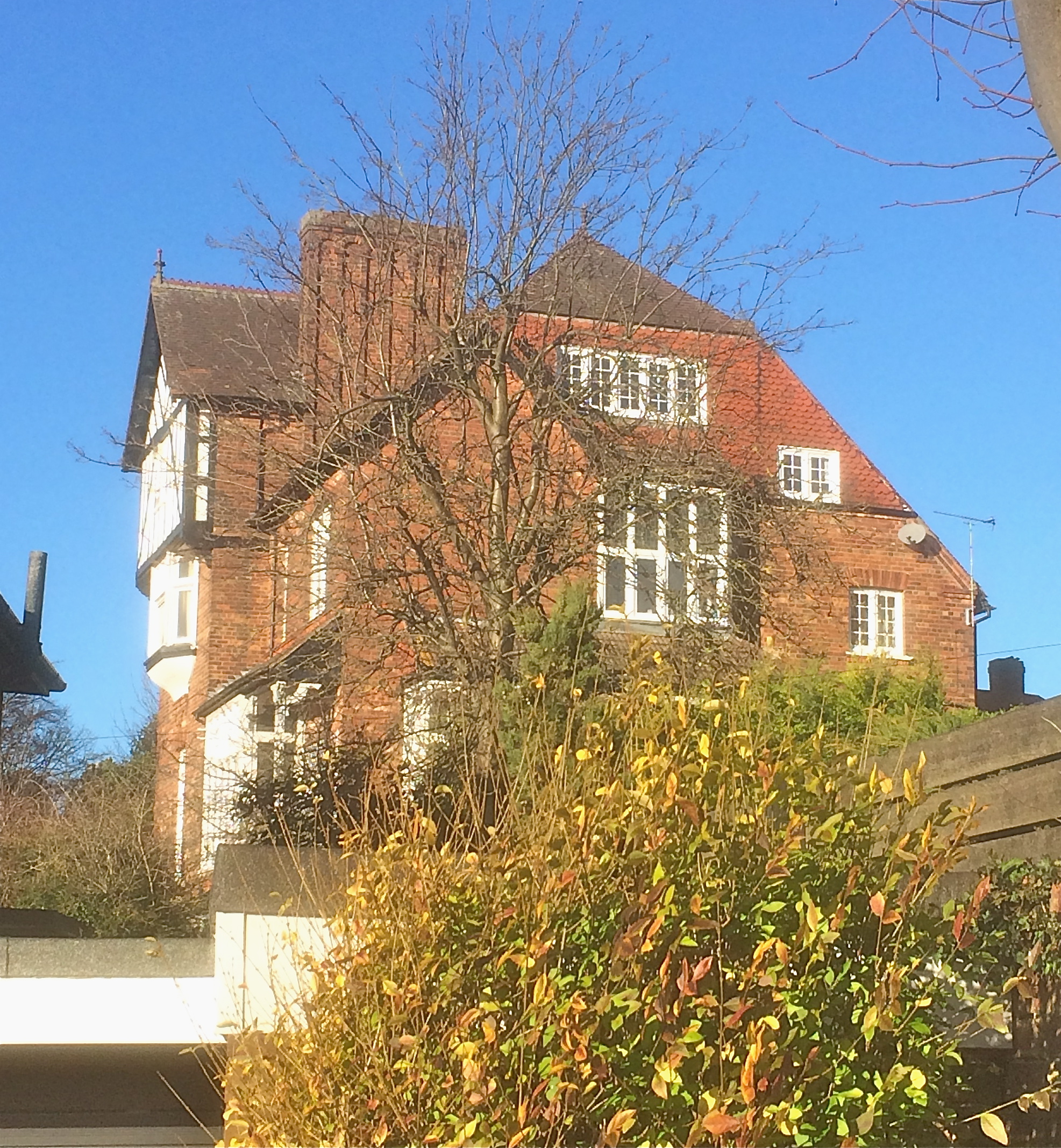 *St Michael's Vicarage, Gibraltar Hill, Drury Lane, Lincoln.1882. Prominently sited overlooking Lincoln from just below the Castle.
*St Michael's Vicarage, Gibraltar Hill, Drury Lane, Lincoln.1882. Prominently sited overlooking Lincoln from just below the Castle.  *St Peter at Gowts Vicarage (1897-9). 1 Sibthorp Street, Lincoln. By Goddard and Son. Red brick with bay window facing High Street. Elaborate moulded terracotta frieze running below the eaves and on the bay window. Terracotta probably by
*St Peter at Gowts Vicarage (1897-9). 1 Sibthorp Street, Lincoln. By Goddard and Son. Red brick with bay window facing High Street. Elaborate moulded terracotta frieze running below the eaves and on the bay window. Terracotta probably by
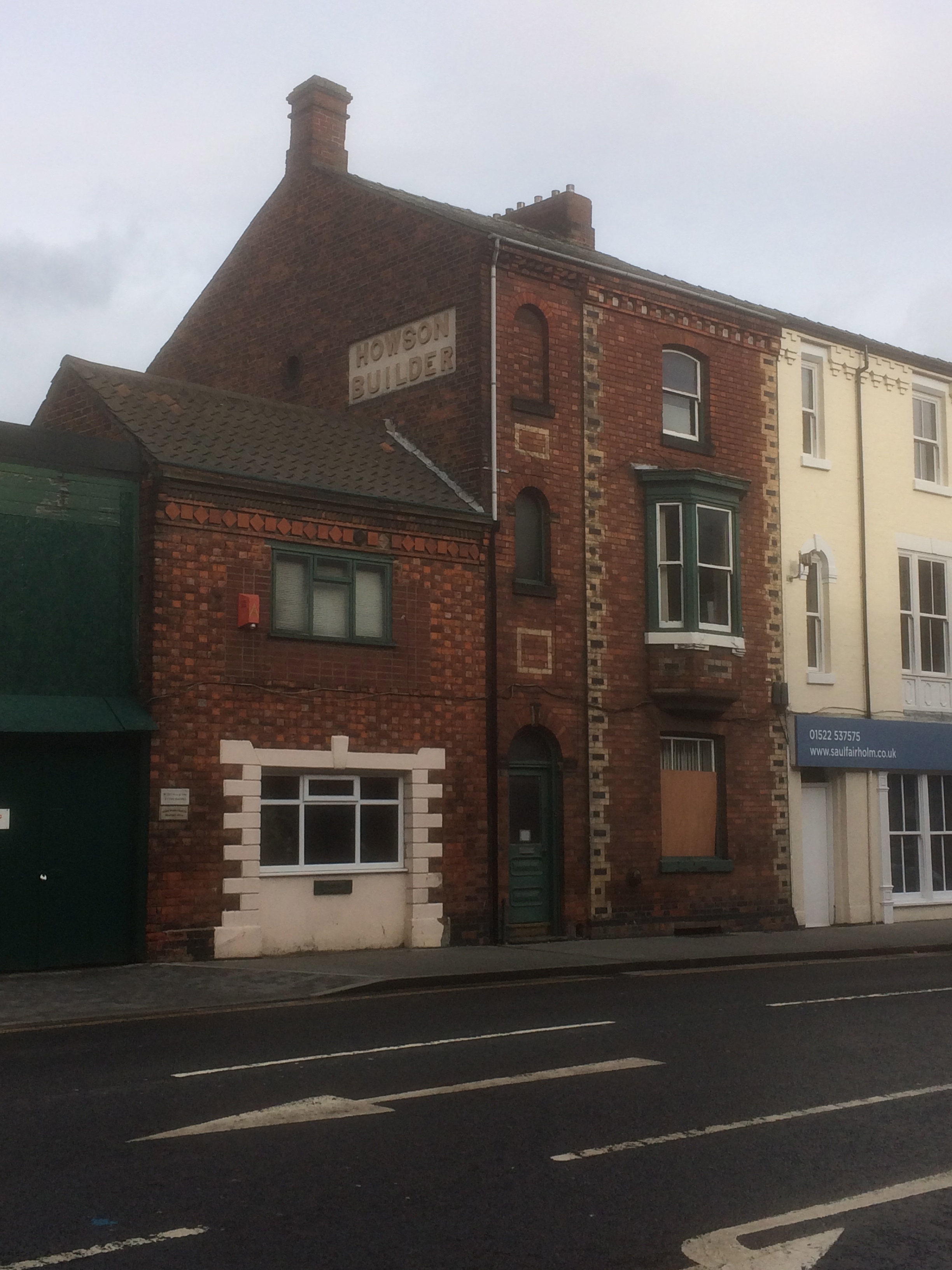
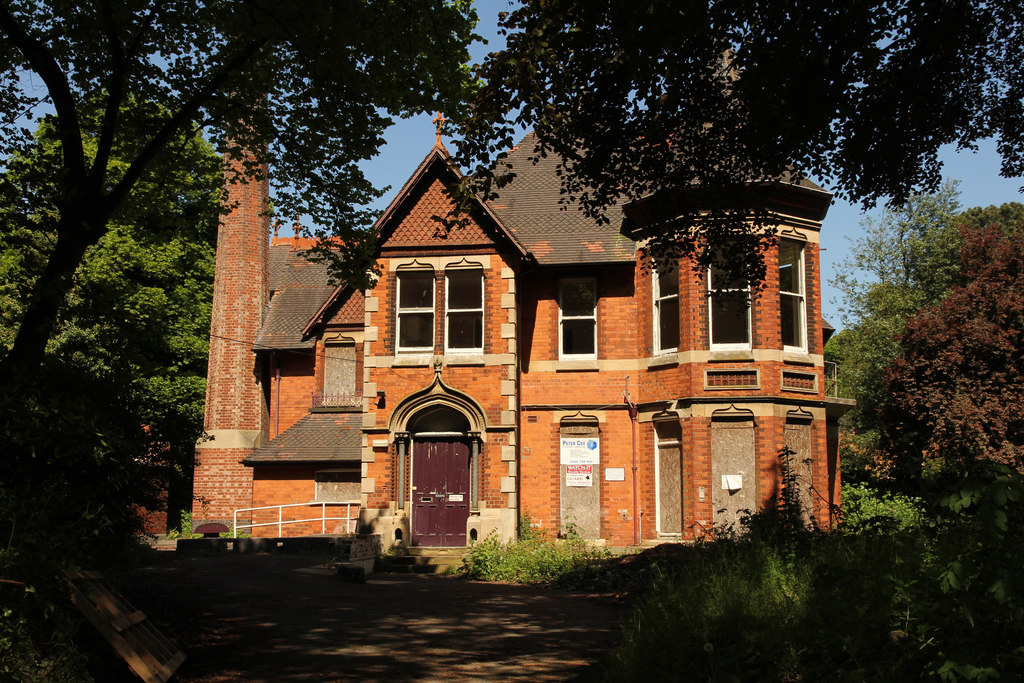 *10-12 Tentercroft Street. Two Houses for Mr Axtel. (1869).
*14 Lindum Terrace, Lincoln, 1871.
*13-15 South Park, Lincoln.
*Wootton Lodge Northgate, Lincoln.
*12 Lindum Terrace 1886. Demolished August 2022.
* 6 The Avenue, Lincoln. 1893.Brick, but now painted cream. Two storeyed, with central porch and ornamented Dutch gable above and flanked with pedimented gables and canted bays to either side of porch. Now part of the Ridgeway Care Centre.
*10-12 Tentercroft Street. Two Houses for Mr Axtel. (1869).
*14 Lindum Terrace, Lincoln, 1871.
*13-15 South Park, Lincoln.
*Wootton Lodge Northgate, Lincoln.
*12 Lindum Terrace 1886. Demolished August 2022.
* 6 The Avenue, Lincoln. 1893.Brick, but now painted cream. Two storeyed, with central porch and ornamented Dutch gable above and flanked with pedimented gables and canted bays to either side of porch. Now part of the Ridgeway Care Centre.
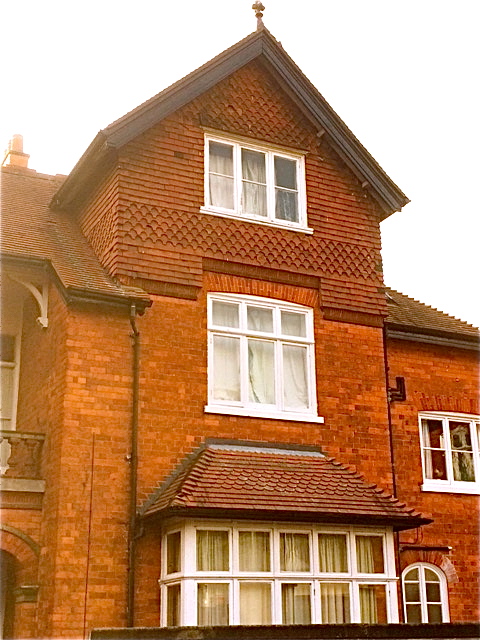 *1 & 2 Eastcliff Road (off Lindum Terrace) Lincoln. 1896. Two houses in
*1 & 2 Eastcliff Road (off Lindum Terrace) Lincoln. 1896. Two houses in  *Eastfield, 27 Wragby Road. Lincoln. 1893 A house which F. H. Goddard had built for himself shortly before his retirement. Art and Crafts in style, facing to the south, with a largely blank brick wall towards the road, but with a massive terracotta Elizabethan Renaissance revival doorway as an entrance from the road. The terracotta was probably manufactured by the Lincoln firm of
*Eastfield, 27 Wragby Road. Lincoln. 1893 A house which F. H. Goddard had built for himself shortly before his retirement. Art and Crafts in style, facing to the south, with a largely blank brick wall towards the road, but with a massive terracotta Elizabethan Renaissance revival doorway as an entrance from the road. The terracotta was probably manufactured by the Lincoln firm of
for details of planning applications submitted by architects working in Lincoln. {{DEFAULTSORT:Goddard, Henry 19th-century English architects English ecclesiastical architects Architects from Lincolnshire 1813 births 1899 deaths People from Lincoln, England
Career
In 1838 he came to Lincoln and formed a partnership withWilliam Adams Nicholson
William Adams Nicholson (1803–1853) was an English architect who worked in Lincoln and was a founding member of the Royal Institute of British Architects.
Life
Born on 8 August 1803 at Southwell, Nottinghamshire, he was the son of James Nicho ...
. In 1846 he established his own practice in Lincoln and in 1849 he was awarded a prize by the Agricultural Society for his essay on the ''Construction of Labourer's Cottages'' In 1856 was working from 181 High Street. He became architect to the Great Northern Railway Company and surveyor to Trinity College, Cambridge
Trinity College is a constituent college of the University of Cambridge. Founded in 1546 by Henry VIII, King Henry VIII, Trinity is one of the largest Cambridge colleges, with the largest financial endowment of any college at either Cambridge ...
. Goddard also had an office in Boston in 1859. From 1860 to 1864 his senior assistant was William Watkins, who was to set up his own architectural practice in Lincoln. In 1871 the Nottingham architect Albert Nelson Bromley
Albert Nelson Bromley (15 July 1850 – 16 August 1934) was an English architect based in Nottingham."Brodie" (2001), pg.263
History
He was born in Stafford on 15 July 1850, the son of Charles Nelson Bromley, a surgeon (1817–1853) and Emma ...
was working in Goddard's office. Goddard was in partnership with his son, sometime after 1872. Their practice was at ''City Chambers'' in Gibbeson House, 182 Lincoln High Street, Goddard was already working there before 1856, and where the practice remained until at least 1896. The Lincoln architect John Henry Cooper worked the Goddards' offices and set up his own practice in Lincoln after about 1888. Henry Goddard lived at John of Gaunt's House, 116 High Street where he died on 8 March 1899. The net value of his estate was £10,378.
Family
Goddard was the son of Cornelius Goddard of Leicester and nephew of Henry Goddard (architect 1792–1868) and cousin of Joseph Goddard (architect 1840–1900), both of whom worked in Leicester. He married Eleanor Ann, the fourth daughter of Mr George Baker of Nottingham at St Mary's Church Nottingham in December 1838. Henry Goddard's son Francis Henry appears to have retired from the practice at about the time of his father's death. He lived at Eastfield, Lincoln. He died from a heart attack on 26 June 1907 after motoring back from Retford. Care should be taken not to confuse the work of Henry Goddard and Goddard and Co. of Leicester with that of Henry Goddard and Goddard and Son of Lincoln. For work of the Leicester architects see The Goddard Trail The Leicester branch of the Goddard practice survives to-day as ''Goddard Manton Architects'', operating from Camden Town in London.Works
Initially Goddard appears to have specialised in Church building and Rectories and Vicarages and was a surveyor for theDiocese of Lincoln
The Diocese of Lincoln forms part of the Province of Canterbury in England. The present diocese covers the ceremonial county of Lincolnshire.
History
The diocese traces its roots in an unbroken line to the Pre-Reformation Diocese of Leices ...
. He probably followed Edward James Willson
Edward James Willson (1787–1854) was an English people, English architect, antiquary, architectural writer, and Mayor of Lincoln, England, mayor of Lincoln in 1851–2.
Life
Born in Lincoln, England, Lincoln on 21 June 1787, he was the eldes ...
as the Surveyor to the Lincolnshire County Committee and, following the Militia Act of 1852, was commissioned in 1857 to build the Old Barracks
The Old Barracks Museum, also known just as the Old Barracks, is a historic building located at 101 Barracks Street in Trenton, Mercer County, New Jersey. Built in 1758 to house soldiers of the British Army, it is the only remaining colonial bar ...
in Lincoln
Lincoln most commonly refers to:
* Abraham Lincoln (1809–1865), the sixteenth president of the United States
* Lincoln, England, cathedral city and county town of Lincolnshire, England
* Lincoln, Nebraska, the capital of Nebraska, U.S.
* Lincol ...
for the North Lincoln Militia. It has also been suggested that he may have been responsible for the Old Barracks
The Old Barracks Museum, also known just as the Old Barracks, is a historic building located at 101 Barracks Street in Trenton, Mercer County, New Jersey. Built in 1758 to house soldiers of the British Army, it is the only remaining colonial bar ...
in Sandon Road in Grantham
Grantham () is a market and industrial town in the South Kesteven district of Lincolnshire, England, situated on the banks of the River Witham and bounded to the west by the A1 road. It lies some 23 miles (37 km) south of the Lincoln and ...
for the South Lincolnshire Militia.



Work for the Great Northern Railway
By 1848 Henry Goddard was appointed architect to the Great Northern Railway. This was after King's Cross had been built byLewis Cubitt
Lewis Cubitt (29 September 1799 – 9 June 1883) was an English civil engineer and architect.
Life
He was a younger brother of Thomas Cubitt, the leading master builder in London in the second quarter of the 19th century, and he designed many ...
and branch lines from Lincoln to Boston, Gainsborough, Peterborough and Grimsby had been completed. He was responsible for all the new main line stations between King's Cross and Doncaster. The new main line ran through Peterborough
Peterborough () is a cathedral city in Cambridgeshire, east of England. It is the largest part of the City of Peterborough unitary authority district (which covers a larger area than Peterborough itself). It was part of Northamptonshire until ...
, Newark
Newark most commonly refers to:
* Newark, New Jersey, city in the United States
* Newark Liberty International Airport, New Jersey; a major air hub in the New York metropolitan area
Newark may also refer to:
Places Canada
* Niagara-on-the ...
and Retford
Retford (), also known as East Retford, is a market town in the Bassetlaw District in Nottinghamshire, England, and one of the oldest English market towns having been granted its first charter in 1105. It lies on the River Idle and the Chesterfie ...
and was fully operational by 1852. He was also the architect for Boston railway station
Boston railway station serves the town of Boston in Lincolnshire, England. It is on the Poacher Line.
The station is now owned by Network Rail and managed by East Midlands Railway who provide all rail services.
History
The station opene ...
which opened 1850. Many of Goddard's stations on the branch lines had tall towers, often placed centrally, as at Spalding. Apart from the railway stations, Goddard was also the architect for the Great Northern Hotels at Peterborough and at Lincoln.



Architect to the Lincolnshire Constabulary
 The Lincolnshire Constabulary was formed in 1856 under the
The Lincolnshire Constabulary was formed in 1856 under the County and Borough Police Act 1856
The County and Borough Police Act 1856 or the Police Act 1856 (19 & 20 Vict c 69) was an Act of the Parliament of the United Kingdom. It was one of the Police Acts 1839 to 1893.The Short Titles Act 1896, section 2(1) and Schedule 2 The Act made it ...
. Goddard was the first architect to the Constabulary and the first buildings to be constructed were in the south of the County at Spalding, Holbeach
Holbeach is a market town and civil parish in the South Holland District in Lincolnshire, England. The town lies from Spalding; from Boston; from King's Lynn; from Peterborough; and by road from Lincoln. It is on the junction of the ...
and Long Sutton in 1857. with further Police Stations at Donington in 1858, Sutterton
__NOTOC__
Sutterton is a village and rural parish in the Boston District of Lincolnshire, England. The population of the Civil Parish at the 2011 census was 1,585.
Governance
The parish used to form part of the Boston Rural District, in the P ...
in 1859 and Crowland
Crowland (modern usage) or Croyland (medieval era name and the one still in ecclesiastical use; cf. la, Croilandia) is a town in the South Holland district of Lincolnshire, England. It is situated between Peterborough and Spalding. Crowland c ...
in 1865.
The new County Headquarters building of 1859, by Goddard, was at 382 High Street, Lincoln. This is now divided into three shops. It was built in brick with stone dressing and a central Venetian window
A Venetian window (also known as a Serlian window) is a large tripartite window which is a key element in Palladian architecture. Although Sebastiano Serlio (1475–1554) did not invent it, the window features largely in the work of the Italian a ...
with a central curved pediment, supported by ornamental consoles.
Public and Commercial Buildings

 *Great Northern Hotel, Peterborough.
* Great Northern Hotel and Great Northern Vaults, 177 High Street (west side), Lincoln 1847 but formerly ‘’ The Black Boy’’. By Henry Goddard. Behind, facing the railway was a 13 bay range Pevsner claimed that it was possibly incorporating parts of an earlier building, but record photographs of the demolition show this was not the case. Demolished c.1959.
*Great Northern Vaults, High Street, Lincoln. On the opposite side of the street to the Great Northern Hotel, also by Goddard. This was presumably a wine and spirits storage deport with an Italianate tower with a large entrance arch and two wings facing onto the High Street, just too the south of the existing railway crossing. All demolished apart from a portion of the southern wing which still fronts onto the High Street
*Great Northern Hotel, Peterborough.
* Great Northern Hotel and Great Northern Vaults, 177 High Street (west side), Lincoln 1847 but formerly ‘’ The Black Boy’’. By Henry Goddard. Behind, facing the railway was a 13 bay range Pevsner claimed that it was possibly incorporating parts of an earlier building, but record photographs of the demolition show this was not the case. Demolished c.1959.
*Great Northern Vaults, High Street, Lincoln. On the opposite side of the street to the Great Northern Hotel, also by Goddard. This was presumably a wine and spirits storage deport with an Italianate tower with a large entrance arch and two wings facing onto the High Street, just too the south of the existing railway crossing. All demolished apart from a portion of the southern wing which still fronts onto the High Street
 *
*Market Rasen
Market Rasen ( ) is a town and civil parish within the West Lindsey district of Lincolnshire, England. The River Rase runs through it east to west, approximately north-east from Lincoln, east from Gainsborough, 14 miles (23 km) west of Louth ...
, Corn Exchange. 1854. Stone faced Italianate facade.
*The Corn Exchange, The Market Place, Alford, Lincolnshire, 1856. Italianate Venetian derived style
*The Old Barracks
''The'' () is a grammatical article in English, denoting persons or things already mentioned, under discussion, implied or otherwise presumed familiar to listeners, readers, or speakers. It is the definite article in English. ''The'' is the m ...
in Lincoln (now occupied by the Lincolnshire Life Museum), 1857.
*The Mechanic's Institute, Carlton le Willows, Gedling, Nottinghamshire. Memorial Hall for the late Earl of Chesterfield. The foundation stone of Institute was laid by his brother-in-law, the Earl of Carnavon on 16 September 1872, and the architects were Goddard and Son, Lincoln.
Houses
 *Lincoln Hartshome Hall, was built in 1862 for the industrialist Joseph Shuttleworth. The grounds were laid out by the landscape architect Edward Milner and included a lake, imported and native trees and shrubs, yew trees forming the Ladies’ Walk, a yew circle, a small crescent-shaped pond and a ha-ha. Surviving buildings and structures include the boathouse (built in 1881 and bearing the Shuttleworth Crescent), stables, a lodge along the track leading to Doddington Road, balustrades and steps, and a number of monuments including the obelisk on the north side of the lake. Hartsholme Hall itself was demolished in 1951 after being purchased by Lincoln City.
*Monks' Manor, Lincoln. Goddard would appear to have designed this house for
*Lincoln Hartshome Hall, was built in 1862 for the industrialist Joseph Shuttleworth. The grounds were laid out by the landscape architect Edward Milner and included a lake, imported and native trees and shrubs, yew trees forming the Ladies’ Walk, a yew circle, a small crescent-shaped pond and a ha-ha. Surviving buildings and structures include the boathouse (built in 1881 and bearing the Shuttleworth Crescent), stables, a lodge along the track leading to Doddington Road, balustrades and steps, and a number of monuments including the obelisk on the north side of the lake. Hartsholme Hall itself was demolished in 1951 after being purchased by Lincoln City.
*Monks' Manor, Lincoln. Goddard would appear to have designed this house for Joseph Ruston
Joseph Ruston (1835 – 11 June 1897) was an English engineer and manufacturer and Liberal Party politician, though he split from the party over Home Rule and retired.obit. The Automotor and Horseless Carriage Journal, June 1897, p367
Ruston was ...
in the 1860s and added a picture gallery in 1883. The house stood in approximately 25 acres between Greetwell Road and Wragby Road. It was in an Italianate style with a tower. The house demolished in 1933.
*Somerby Rectory, Lincolnshire. (1865)
*Owston Ferry
Owston Ferry is a village and civil parish in North Lincolnshire, England. It is situated on the west bank of the River Trent, and north from Gainsborough. It had a total resident population of 1,128 in 2001 including Kelfield. This increased t ...
, Lincolnshire. Old Vicarage, 1866.
* Sturton by Stow. Additions to the Rectory. 1866
*Scawby
Scawby is a village and civil parish in North Lincolnshire, England. It is situated south-west from Brigg, and just east from the A15 road, and south from the M180 motorway. According to the 2001 Census, Scawby population (including Sturton) ...
. Alterations to Old Vicarage, 1868.
School
 *National School, Bassingham, Lincolnshire. Later Board School and now primary school.(1855) The Lincolnshire Chronicle reports:''The National schools here have just been completed from the design, and under the direction of Mr. H. Goddard, architect, of Lincoln. The buildings are conveniently situated opposite to the church, and their plan resemble the letter H, one wing forming the boys' school, and the other the master's residence, with the girls' school in the centre, the offices being detached and in the rear. The walls are of red brick-work, with arched and splayed openings for the window frames, and the gables of the roof, which are of a high pitch and covered with slate, are ornamented with carved verge boards, that of the boys' school having also stone ribbon, bearing the name and date of erection.'' The cost of construction was about £650.
*National School, Bassingham, Lincolnshire. Later Board School and now primary school.(1855) The Lincolnshire Chronicle reports:''The National schools here have just been completed from the design, and under the direction of Mr. H. Goddard, architect, of Lincoln. The buildings are conveniently situated opposite to the church, and their plan resemble the letter H, one wing forming the boys' school, and the other the master's residence, with the girls' school in the centre, the offices being detached and in the rear. The walls are of red brick-work, with arched and splayed openings for the window frames, and the gables of the roof, which are of a high pitch and covered with slate, are ornamented with carved verge boards, that of the boys' school having also stone ribbon, bearing the name and date of erection.'' The cost of construction was about £650.
Church Restoration
*Saxilby
Saxilby is a large village in the West Lindsey district of Lincolnshire, England, about north-west from Lincoln, on the A57 road at the junction of the B1241. It is part of the civil parish of Saxilby and Ingleby, which includes the village of ...
. Former St Andrew's church, 1879
*Hemswell church. Rebuilt 1857–65.
*Lincoln. St Botolph's Church. Rebuilt nave in 1861.
Cemetery
*Lincoln Cemetery, Canwick road. Laid out by Goddard 1856.H and F H Goddard
In partnership after 1867.Work by the Goddards for the Lincoln Industrialists
 The rapid growth of Lincoln in the mid to late 19th century provided considerable opportunities for undertaking architectural work for wealthy factory owners who were involved in the engineering and metalworking industries. This work involved the design and layout of factories, the provision of housing, the laying out of new streets and the construction of the villas and residences of the factory owners. The Goddards seem to have developed a close relationship with
The rapid growth of Lincoln in the mid to late 19th century provided considerable opportunities for undertaking architectural work for wealthy factory owners who were involved in the engineering and metalworking industries. This work involved the design and layout of factories, the provision of housing, the laying out of new streets and the construction of the villas and residences of the factory owners. The Goddards seem to have developed a close relationship with Joseph Ruston
Joseph Ruston (1835 – 11 June 1897) was an English engineer and manufacturer and Liberal Party politician, though he split from the party over Home Rule and retired.obit. The Automotor and Horseless Carriage Journal, June 1897, p367
Ruston was ...
who was the managing director of Ruston, Proctor and Company
Ruston, Proctor and Company was established in Lincoln, England in 1857, and were manufacturers of steam tractors and engines. They later became Rustons and then Ruston & Hornsby.
History
The firm was started as millwrights and implement man ...
. The Goddards were are likely to be the architects of his house, Monk's Manor on Greetwell Road in Linoln. They also provided new offices for Ruston Proctor on their Stamp End Sheaf Works Joseph Ruston also financed the building of the Drill Hall in Broadgate for which Goddards were the architects.
The Goddards also undertook extensive design work for Clayton & Shuttleworth
Clayton & Shuttleworth was an engineering company located at Stamp End Works, Lincoln, Lincolnshire, England. The company was established in 1842 when Nathaniel Clayton (1811–1890) formed a partnership with his brother-in-law, Joseph Shuttlewo ...
who occupied the adjacent site to Ruston Proctor at Stamp End. A print of 1865 of their ironworks would suggest that they had been closely involved in the layout of the factory. An Italianate tower in the central foreground appears to be a hallmark of their work and is seen again on the Great Northern Hotel depot building and on Ruston's Monk's Manor. They were to add further offices to this complex in 1878. The Goddards also designed Hartsholme Park for Joseph Shuttleworth.
Another factory complex that was laid out by the Goddards was the new Wellington Foundry on the Derby Farm in New Boultham in 1883.
Public Buildings

 * Lincoln, The Drill Hall, Broadgate. 1890. The architect was ''Major F. H. Goddard'' of Goddard and Co. It was built at the cost of £10,000 which was funded by
* Lincoln, The Drill Hall, Broadgate. 1890. The architect was ''Major F. H. Goddard'' of Goddard and Co. It was built at the cost of £10,000 which was funded by Joseph Ruston
Joseph Ruston (1835 – 11 June 1897) was an English engineer and manufacturer and Liberal Party politician, though he split from the party over Home Rule and retired.obit. The Automotor and Horseless Carriage Journal, June 1897, p367
Ruston was ...
. It was created as a result of the 1863 Volunteer Act and was to provide drilling facilities for the 1st Lincolnshire Volunteer Battalion.
*St John's Hospital, London Road, Bracebridge Lincolnshire. County Asylum, now converted into housing. Built between 1849 and 1852. Addition in 1880-82 of two wings to the original building by F.H. Goddard of Lincoln-the builder was W. Pattison.. This brought the capacity of the hospital to 680. Goddard was also the architect for further additions built in 1897.
Bank
*Barclay's Bank, High Street. Lincoln. 1873. Stone of three storeys with a parapet and ornate cornicing. The ground floor with aRomanesque revival
Romanesque Revival (or Neo-Romanesque) is a style of building employed beginning in the mid-19th century inspired by the 11th- and 12th-century Romanesque architecture. Unlike the historic Romanesque style, Romanesque Revival buildings tended to ...
doorway and two windows in Romanesque style. On the corner of High Street with Cornhill. Demolished in 1973 or earlier and replaced with present building by Bright of Clarke Hall, Scorer and Bright
Schools
*St Swithin's School, Croft Street, Lincoln. *Brigg Grammar School extension 1878.Rectories and Vicarages
 * St Swithins Parsonage 15 Lindum Terrace, Lincoln. 1871. Red brick with black banding running round the building at second storey level and contrasting red and black bricks used for window
* St Swithins Parsonage 15 Lindum Terrace, Lincoln. 1871. Red brick with black banding running round the building at second storey level and contrasting red and black bricks used for window voussoirs
A voussoir () is a wedge-shaped element, typically a stone, which is used in building an arch or vault.
Although each unit in an arch or vault is a voussoir, two units are of distinct functional importance: the keystone and the springer. The ...
. Iron cresting to roof ridges. Now the Hillcrest Hotel.
 *Bourne Vicarage. By F.H Goddard, 1878.
*
*Bourne Vicarage. By F.H Goddard, 1878.
*Spridlington
Spridlington is a village and civil parish in the West Lindsey district of Lincolnshire, England. It is situated approximately north from the city and county town of Lincoln, and just off the A15 road. According to the 2001 Census the village ...
Hall (former Rectory). Additions 1878.
*17 Minster Yard, (Subdeanery) Extensive rebuilding and re-fenestration to the east end for Rev. Clements by F.H. Goddard
 *St Michael's Vicarage, Gibraltar Hill, Drury Lane, Lincoln.1882. Prominently sited overlooking Lincoln from just below the Castle.
*St Michael's Vicarage, Gibraltar Hill, Drury Lane, Lincoln.1882. Prominently sited overlooking Lincoln from just below the Castle. Arts and Crafts
A handicraft, sometimes more precisely expressed as artisanal handicraft or handmade, is any of a wide variety of types of work where useful and decorative objects are made completely by one’s hand or by using only simple, non-automated re ...
style with tile hanging and upper part of projecting gable half timbered. Brick arcaded chimney stack. Built for the Rev. G. B. Jamieson
 *St Peter at Gowts Vicarage (1897-9). 1 Sibthorp Street, Lincoln. By Goddard and Son. Red brick with bay window facing High Street. Elaborate moulded terracotta frieze running below the eaves and on the bay window. Terracotta probably by
*St Peter at Gowts Vicarage (1897-9). 1 Sibthorp Street, Lincoln. By Goddard and Son. Red brick with bay window facing High Street. Elaborate moulded terracotta frieze running below the eaves and on the bay window. Terracotta probably by Fambrini & Daniels
Fambrini and Daniels were artificial stone and terracotta manufacturers in Canwick Road, Lincoln, England. The company was probably founded in 1838. About 1913 it became the Lindum Stone Company which ceased trading after 1949.
History
Joseph F ...
.
Houses

 *10-12 Tentercroft Street. Two Houses for Mr Axtel. (1869).
*14 Lindum Terrace, Lincoln, 1871.
*13-15 South Park, Lincoln.
*Wootton Lodge Northgate, Lincoln.
*12 Lindum Terrace 1886. Demolished August 2022.
* 6 The Avenue, Lincoln. 1893.Brick, but now painted cream. Two storeyed, with central porch and ornamented Dutch gable above and flanked with pedimented gables and canted bays to either side of porch. Now part of the Ridgeway Care Centre.
*10-12 Tentercroft Street. Two Houses for Mr Axtel. (1869).
*14 Lindum Terrace, Lincoln, 1871.
*13-15 South Park, Lincoln.
*Wootton Lodge Northgate, Lincoln.
*12 Lindum Terrace 1886. Demolished August 2022.
* 6 The Avenue, Lincoln. 1893.Brick, but now painted cream. Two storeyed, with central porch and ornamented Dutch gable above and flanked with pedimented gables and canted bays to either side of porch. Now part of the Ridgeway Care Centre.
 *1 & 2 Eastcliff Road (off Lindum Terrace) Lincoln. 1896. Two houses in
*1 & 2 Eastcliff Road (off Lindum Terrace) Lincoln. 1896. Two houses in Arts and Crafts
A handicraft, sometimes more precisely expressed as artisanal handicraft or handmade, is any of a wide variety of types of work where useful and decorative objects are made completely by one’s hand or by using only simple, non-automated re ...
style developed by the Lincoln builders H S and W Close. Both brick with tile hangings. According to the Lincoln Buildings applications No 1 is by H S Close and No. 2 is by Goddard and Son. As both houses are similar in design, both must have been designed by Goddard and built by the Close brothers.
 *Eastfield, 27 Wragby Road. Lincoln. 1893 A house which F. H. Goddard had built for himself shortly before his retirement. Art and Crafts in style, facing to the south, with a largely blank brick wall towards the road, but with a massive terracotta Elizabethan Renaissance revival doorway as an entrance from the road. The terracotta was probably manufactured by the Lincoln firm of
*Eastfield, 27 Wragby Road. Lincoln. 1893 A house which F. H. Goddard had built for himself shortly before his retirement. Art and Crafts in style, facing to the south, with a largely blank brick wall towards the road, but with a massive terracotta Elizabethan Renaissance revival doorway as an entrance from the road. The terracotta was probably manufactured by the Lincoln firm of Fambrini & Daniels
Fambrini and Daniels were artificial stone and terracotta manufacturers in Canwick Road, Lincoln, England. The company was probably founded in 1838. About 1913 it became the Lindum Stone Company which ceased trading after 1949.
History
Joseph F ...
.
Church Restoration
* Swayfield, Rebuilt part of church1875-6. * Timberland. Restoration of church, 1887. * Normanby by Spital. Restoration of church in 1890."Antram", 579Literature
*Antram N (revised), Pevsner N & Harris J, (1989), ''The Buildings of England: Lincolnshire'', Yale University Press. *Antonia Brodie (ed), ''Directory of British Architects, 1834–1914'': 2 Vols, British Architectural Library, Royal Institute of British Architects, 2001, Vol 1, pg. 735. *Brandwood, G.K. and Cherry, M.(1990), ''Men of property, the Goddards and six generations of architecture'' Leicester Museum Service. *Obituaries. (1899) ''Building News'', vol. 76, pg.369. ''Builder'', vol. 76, pg.281. ''Times'' 11 March 1899, pg. 10.References
External links
* The Survey of Lincoln:''City Building Applications Database 1866 - 1952'for details of planning applications submitted by architects working in Lincoln. {{DEFAULTSORT:Goddard, Henry 19th-century English architects English ecclesiastical architects Architects from Lincolnshire 1813 births 1899 deaths People from Lincoln, England